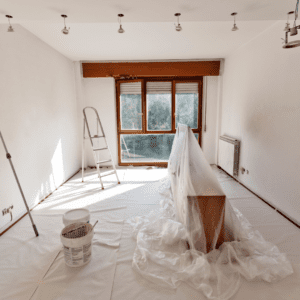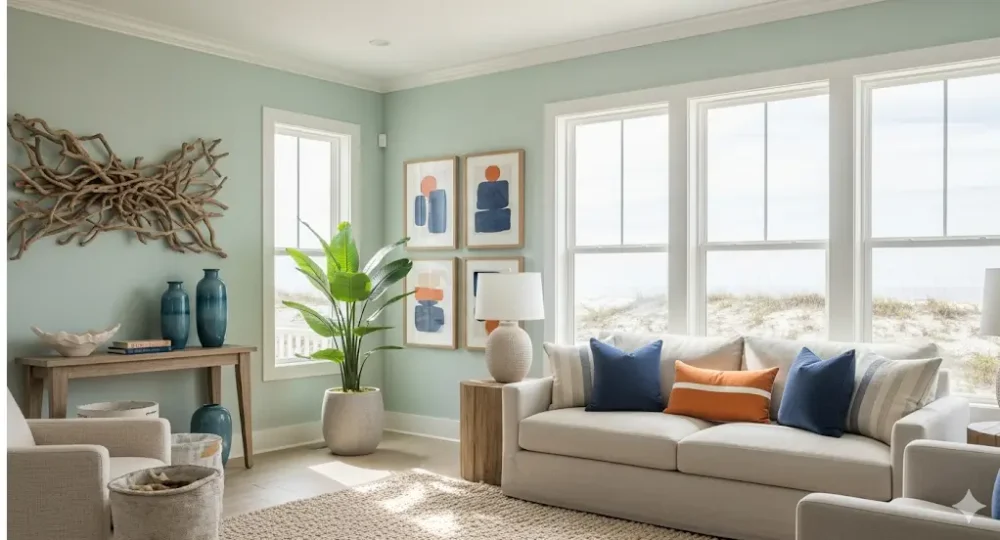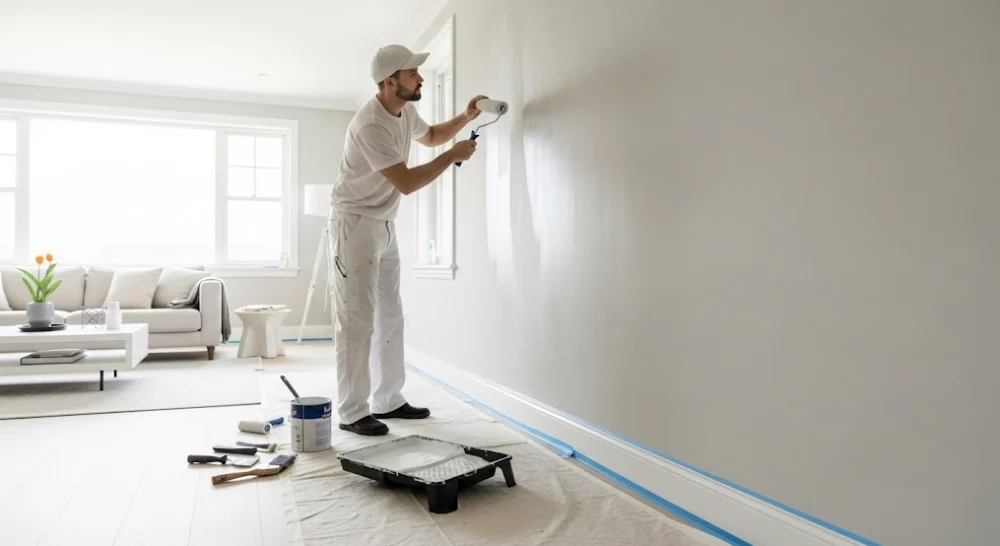
Saul
Choosing the right paint colors for your home is an exciting yet daunting task, especially for first-time homeowners and DIY enthusiasts. The right color can transform your living space, making it feel more welcoming, personal, and cohesive. But with so many options out there, how do you know where to start? Don’t worry – this beginner’s guide will walk you through the essentials of choosing the perfect residential paint colors. From understanding trends to practical tips, we’ll give you the confidence you need to pick colors that will breathe life into your home.
Understanding the Importance of Color in Home Design
Before diving into color choices, it’s important to recognize the role that color plays in setting the tone and mood of your space. Different colors can create different effects in a room:
- Warm colors like reds, yellows, and oranges create a cozy, energetic atmosphere.
- Cool colors such as blues, greens, and purples evoke a calming and peaceful vibe.
- Neutral colors like whites, grays, and beiges provide a versatile backdrop that complements any décor.
Choosing the right color for your space is about more than just what’s trending. It’s about understanding how color can affect the ambiance and function of your rooms.

Step 1: Understand Your Space
Each room in your home serves a different purpose, and the colors you choose should reflect the intended use of each space. Here are a few things to consider when selecting colors for various areas:
- Living rooms and family rooms: These are spaces where you entertain guests and spend time with loved ones, so choose colors that promote relaxation and socialization. Soft neutrals, light blues, or greens are great for creating a calming yet inviting atmosphere.
- Bedrooms: As a retreat for rest and relaxation, your bedroom should be tranquil. Soft blues, lavender, light gray, or even muted pastels can help create a peaceful environment conducive to sleep.
- Kitchens and dining rooms: These areas are where you prepare and enjoy food, so vibrant colors like sunny yellows, warm oranges, and even deep reds can stimulate appetite and energy.
- Bathrooms: Bathrooms are ideal for clean, fresh colors. Soft whites, light blues, or even rich greens can make the space feel more open and serene.
- Hallways and entryways: These spaces serve as transitions between rooms, so neutral tones or subtle shades of your chosen main color work well here to maintain flow.
Step 2: Explore Popular Trends for 2025
While you may want your home to feel timeless, incorporating trending colors can add a modern touch. Here are some of the top paint color trends for 2025 that are making waves in the design world:
- Earthy Tones: Earthy shades like terracotta, olive green, and soft browns are trending for 2025. These colors bring warmth, comfort, and a connection to nature into your home.
- Soft Blues and Greens: Inspired by nature, soft blues and greens, such as seafoam green or powder blue, offer a tranquil and refreshing feel to any room. These colors work well in bedrooms, bathrooms, and living rooms.
- Warm Neutrals: Think of creamy whites, soft beiges, and warm grays. These neutral shades are perfect for creating a timeless base and can be paired with bold accent colors or kept minimalist for a modern, airy look.
- Bold Jewel Tones: Rich jewel tones like emerald green, sapphire blue, and ruby red are gaining popularity for accent walls and statement rooms. These deep colors add sophistication and drama to your space.
- Blush Pink and Muted Mauve: For a gentle, romantic touch, muted pinks and mauves are ideal choices. These colors are being used in bedrooms, living rooms, and even kitchens for their soft, inviting appeal.

Step 3: Create a Color Palette
Once you’ve narrowed down the trends and chosen the right colors for each room, it’s time to build a cohesive color palette. Here’s how you can start:
- Use the 60-30-10 Rule: This rule suggests that you should choose one dominant color for 60% of the room, a secondary color for 30%, and an accent color for the remaining 10%. For example, if your walls are painted a soft beige (dominant color), you might use a deeper taupe for furniture (secondary color) and a bold, rich green for accent pieces like throw pillows or artwork.
- Choose Complementary Colors: Complementary colors are those that sit opposite each other on the color wheel, such as blue and orange, red and green, or yellow and purple. These pairings offer high contrast but can work well when done thoughtfully.
- Consider Monochromatic Schemes: If you’re unsure, monochromatic color schemes use variations of one hue (like lighter or darker shades of blue). This creates a harmonious and soothing look.
- Don’t Forget About Lighting: Natural and artificial lighting can greatly affect how paint colors appear in a room. Always test your chosen color in different lighting conditions before committing.
Step 4: Test Before You Commit
Once you’ve settled on a few options, it’s crucial to test them in your space. The lighting, size of the room, and surrounding décor can all influence how a color looks once it’s applied to the walls. Here’s how you can test colors effectively:
- Get Sample Paints: Many paint stores offer small sample sizes that you can purchase for testing. Apply a few strokes of your chosen colors to different areas of your walls, preferably near windows and artificial light sources to see how the color shifts throughout the day.
- Test Multiple Colors: Even if you think you’ve found the right shade, testing a few similar tones will give you a better sense of which color works best in your home. It’s always a good idea to compare multiple swatches.
- Check the Color at Different Times of Day: As mentioned earlier, lighting plays a major role in how a color appears. Look at the test samples in the morning, afternoon, and evening to ensure the color looks just as you envisioned.

Step 5: Prepare Your Space for Painting
Preparation is key to achieving a professional finish. Here’s a quick checklist to get your space ready for painting:
- Clean the Walls: Dust, dirt, and grease can prevent paint from adhering properly. Use a mild detergent solution to clean the walls before painting.
- Patch Holes and Cracks: Use spackle to fill any holes or cracks in the walls. Sand them down once dry for a smooth surface.
- Tape Edges: To avoid paint bleeding onto trim, windows, and ceilings, use painter’s tape along edges.
- Prime the Walls: If you’re making a major color change or painting over a dark color, applying a primer is essential for ensuring good coverage.
Step 6: Take Your Time and Enjoy the Process
Now that you’re ready, it’s time to paint! Start with one coat and let it dry before applying additional layers if necessary. Be patient, and take your time during the painting process to ensure even coverage and smooth results. Remember, the goal is to create a space that feels like home – one that reflects your style and brings you joy.
Final Thoughts
Choosing the perfect residential paint color doesn’t have to be stressful. By understanding how color affects the mood of your space, exploring current trends, and following a step-by-step approach, you’ll be able to select colors that enhance your home and fit your personal taste. Don’t be afraid to experiment and have fun with the process – after all, this is your space to enjoy!
Contact SA Classic painting for any professional painting needs!
Share:
Related Posts

Pressure Washing in Jacksonville vs. Repainting: Which Saves More?
Property managers often feel the pressure of deciding whether to spend it on repainting their properties or getting pressure washing in Jacksonville to give their

The Red Flags of Unreliable Exterior Painting Contractors
Homeowners tend to focus on cost and schedules when they are hiring exterior painting contractors. They tend to overlook the damage that haste can do

Why Interior Painters in Jacksonville, FL, Recommend Painting Your Home
When homeowners think about updating their living spaces, they probably imagine big renovations taking weeks and costing a fortune. The fastest and most effective refreshment

How House Painters in Jacksonville Pick the Right Hues
Colors can change how a person feels in a place, change their mood, and define the overall feel of a room. A lot of people

How Interior House Painters Can Boost Your Property Value with a Fresh Look
When it comes to making a home more appealing, interior house painters play a very special role that many homeowners tend to overlook. A well-thought-out

